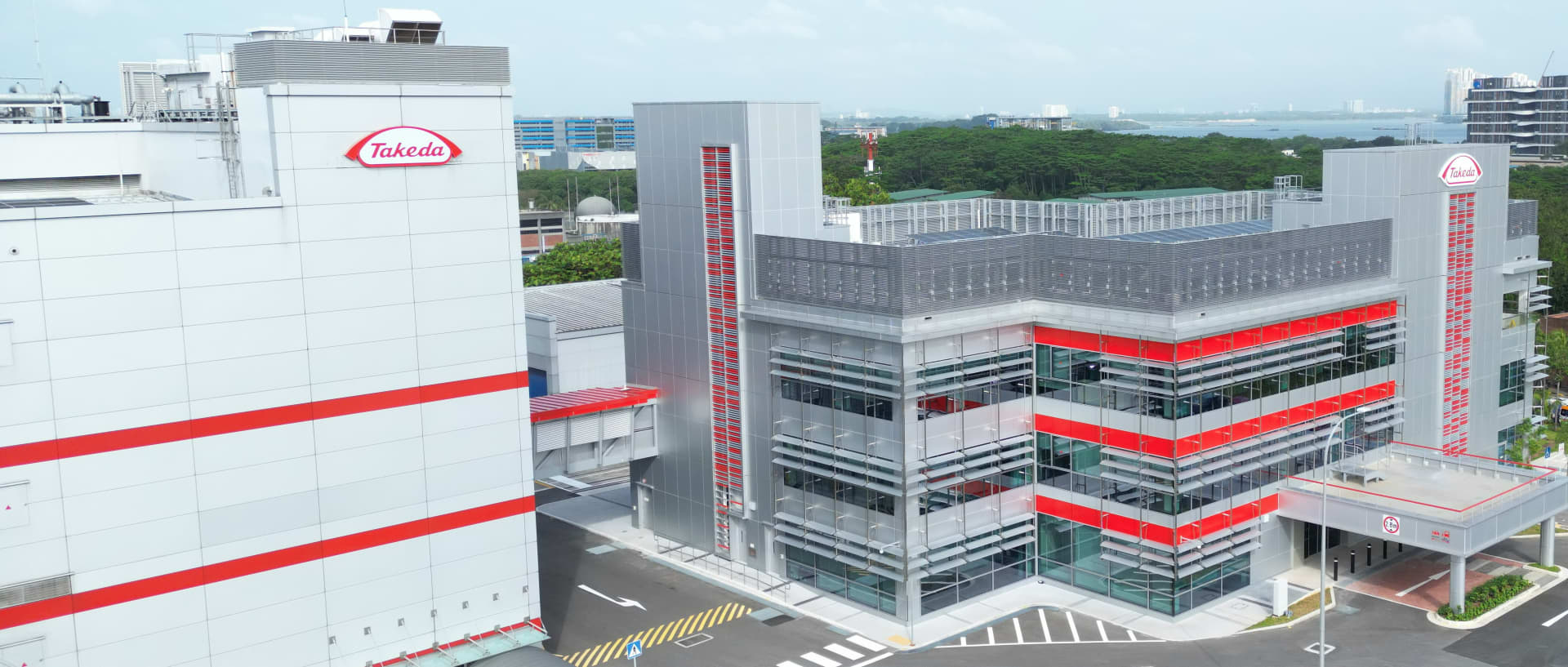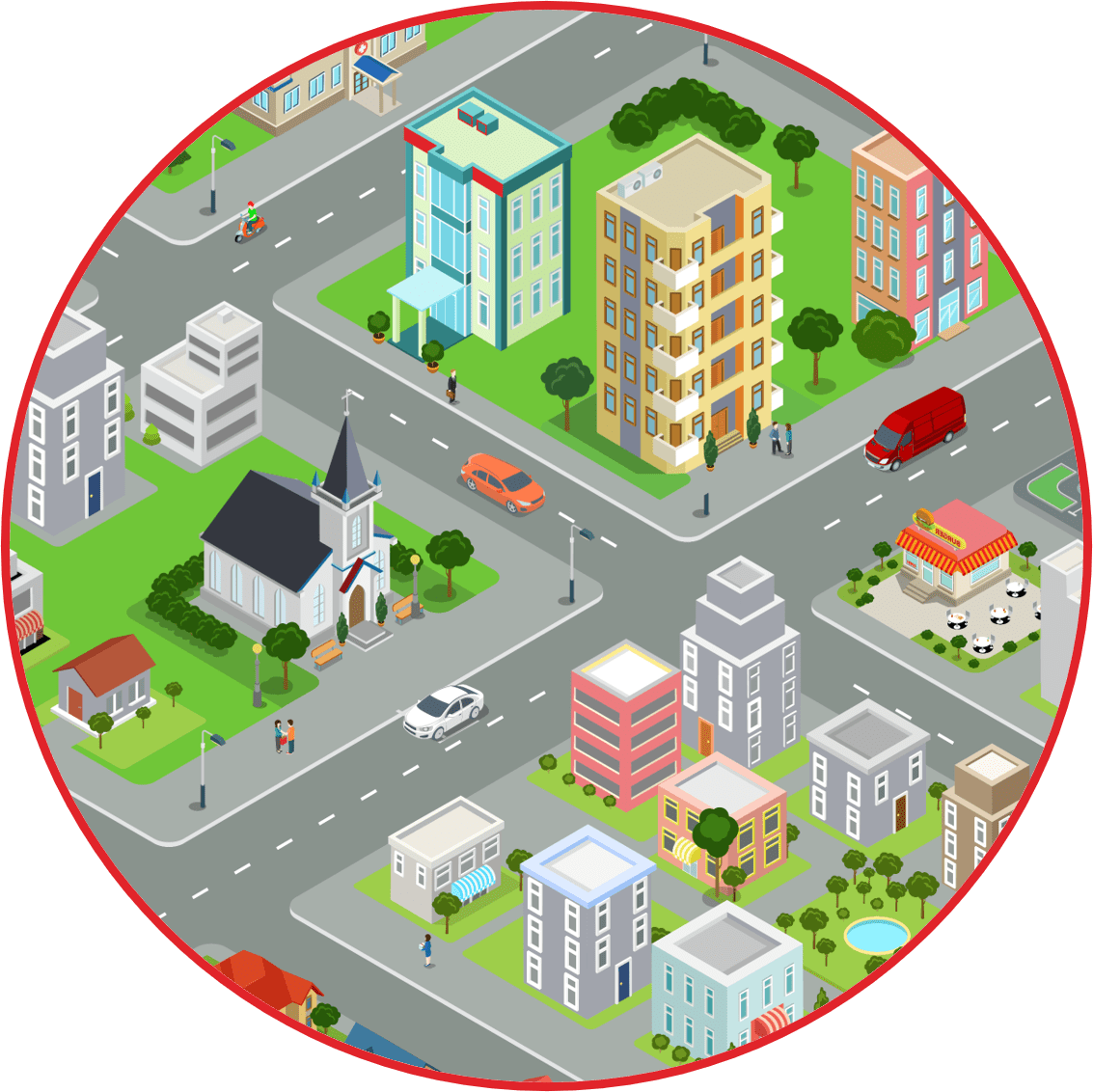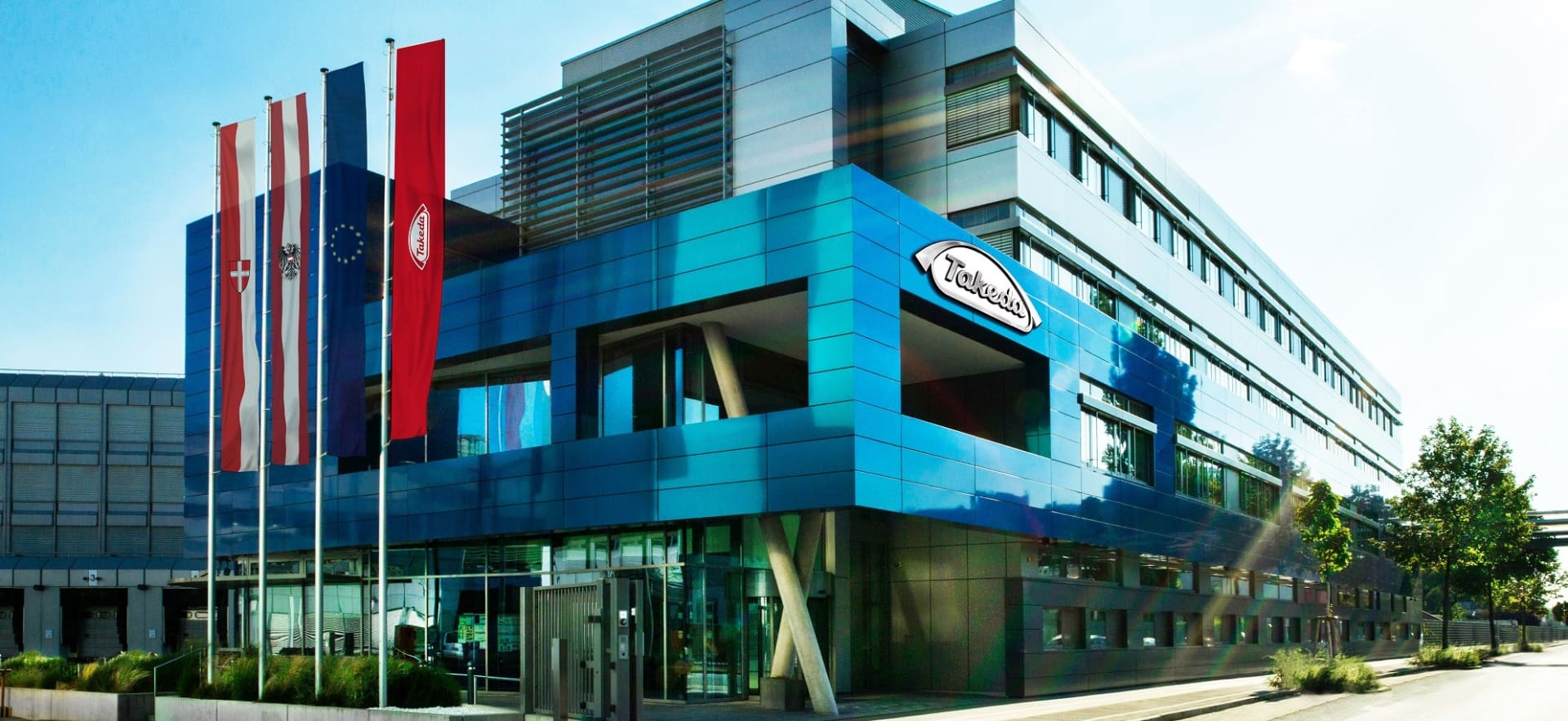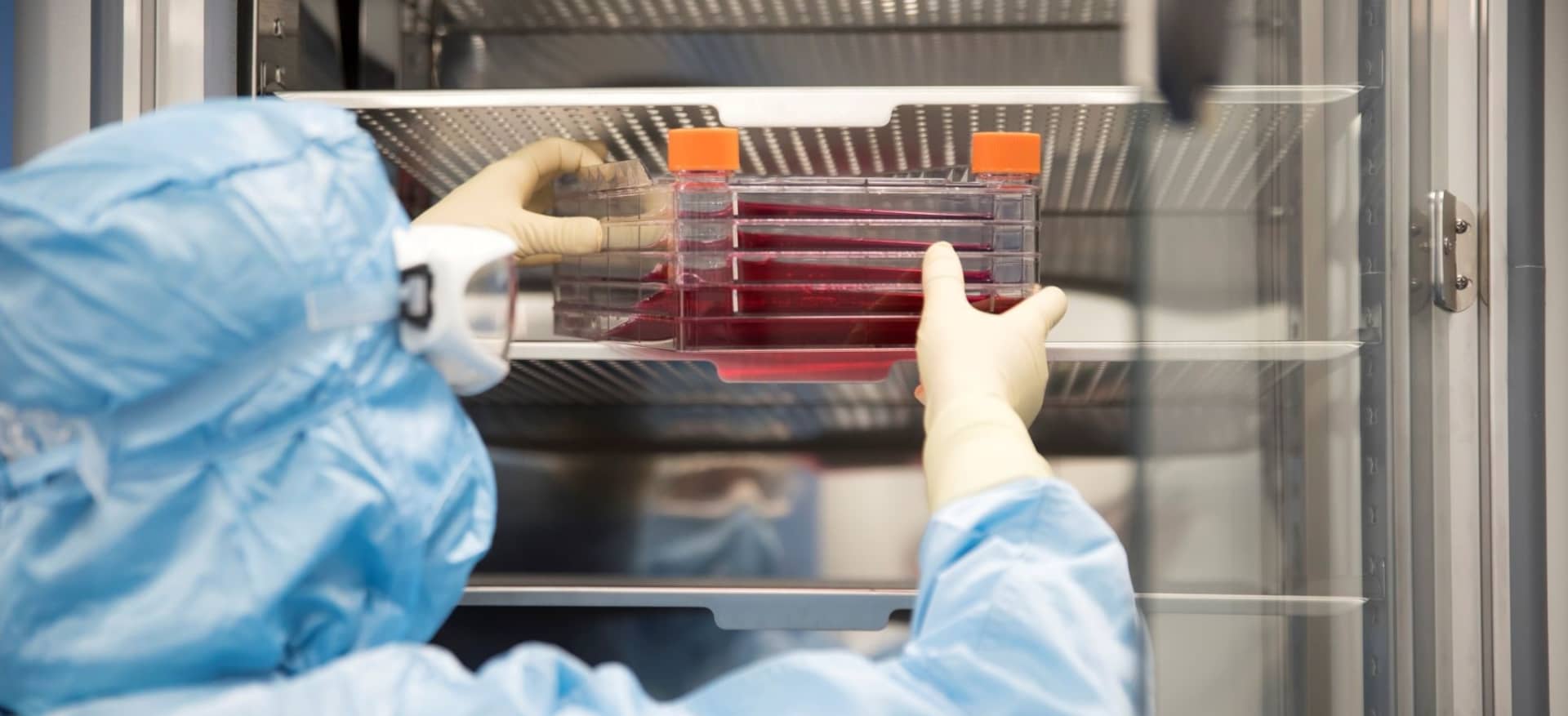This new building produces more energy than it consumes | Takeda Stories

This new building produces more energy than it uses
You walk into work, and occupancy sensors automatically activate an energy-efficient hybrid cooling system that combines ceiling fans with air conditioning. At the same time, photosensors detect ambient light and adjust the interior brightness to reduce energy consumption.
“Most buildings are always pulling small amounts of energy for computers and other electronics,” says Environmental, Health and Safety Engineer Xin Zhi Sin, who works at the facility in Singapore. “This building has a building management system (BMS) that monitors energy consumption from the electrical sockets at our workstations to help reduce our energy consumption.”
The hybrid cooling system and the BMS are examples of the innovative, energy-saving features for which one of our newest buildings — a manufacturing support building — received Green Mark Platinum Positive Energy certification from the Singapore Building and Construction Authority. The certification recognizes the building for being “energy positive,” or producing more energy than it consumes, with at least 115% of its energy coming from on-site renewable sources. The excess energy the building produces is fed into the internal power grid to supply power for our adjacent manufacturing facility.
It’s a first for our company, but we’re not the only ones celebrating the achievement. According to the head of healthcare at the Singapore Economic Development Board, Goh Wan Yee, “Achieving positive energy is a significant milestone not just for Takeda, but also sets a new precedent and standard for Singapore’s biopharmaceutical industry.”
Our President & CEO Christophe Weber says the new building is part of our strategy to find innovative ways to improve the health of people and the planet.
"We acknowledge the intrinsic link between the effects of climate change and human health. This building represents our commitment to environmental sustainability and our efforts to make a positive impact on the world."
Christophe Weber
Delivering on our net-zero commitment
With the construction and operation of real estate accounting for a significant portion of the world’s carbon footprint, an energy-positive building helps advance our goal to become a leader in reducing greenhouse gas emissions and conserving natural resources.
“Our first energy-positive building will help us deliver on our commitment to reach net-zero greenhouse gas emissions in our own operations before 2035,” says our Global Manufacturing & Supply Officer Thomas Wozniewski.
Xin Zhi Sin says he’s pleased that our company’s values align with his own.
“I’m passionate about the environment,” he says. “So I’m proud that at Takeda we have a strong focus on meeting our environmental goals and reducing our environmental footprint.”
Here are some of the building’s innovative, energy-saving features.
Smart-building technology

Plug load monitoring
Load (consumption) from selected electrical plugs are monitored. The lighting in most rooms is programmed to switch off automatically based on signals from occupancy sensors.
Building Management System
Our Building Management System (BMS) is able to trend both water and energy consumption. The data can help us make informed decisions about our usage patterns.
Hybrid cooling
Ceiling fans are used in conjunction with air-conditioning for optimal thermal comfort while achieving energy efficiency.
Lighting
Photosensors detect ambient light and operate by dimming lighting fixtures to reduce energy consumption while maintaining brightness level. Light-emitting diodes (LEDs) help to reduce maintenance cost due to their longer lifespan. In addition, the circadian lighting system mimics the natural lighting cycle and may improve productivity and employee well-being.
A focus on sustainability

Solar photovoltaic panels
Solar panels covering an area of 1,600m2 are installed on the rooftops of our two buildings. They harness renewable energy to reduce the operational greenhouse gas emissions of the manufacturing support building.
Rainwater harvesting
Rainwater harvest tanks store rainwater for general use, including irrigation and toilet flushing.
Green building materials
Green concrete — concrete mixed with recycled materials — was used in the construction of the building.



